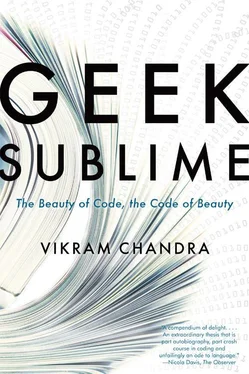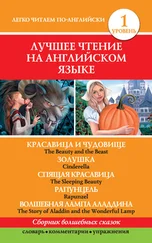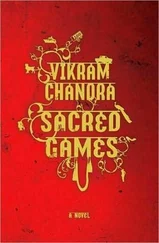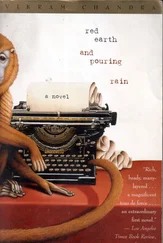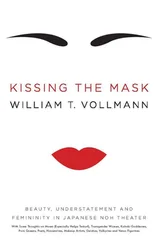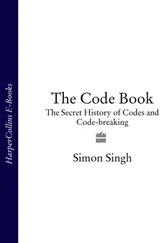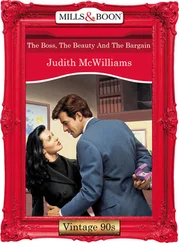Vikram Chandra
Geek Sublime: The Beauty of Code, the Code of Beauty
Figure 3.1: CIL for “Hello, world!” program in C#
Figure 3.2: Machine code for “Hello, world!” program in C#
Figure 3.3: Addition operator
Figure 3.4: Addition operator with inputs “3” and “2”
Figure 3.5: Subtraction operator
Figure 3.6: Subtraction operator with inputs “4.2” and “2.2”
Figure 3.7: AND operator
Figure 3.8: AND operator with inputs “false” and “true”
Figure 3.9: AND operator with inputs “true” and “true”
Figure 3.10: OR operator with inputs “false” and “true”
Figure 3.11: OR operator with inputs “0” and “1”
Figure 3.12: XOR operator with inputs “1” and “1”
Figure 3.13: LEGO AND logic gate with inputs “0” and “0” (Martin Howard)
Figure 3.14: LEGO AND logic gate with inputs “1” and “1” (Martin Howard)
Figure 3.15: LEGO XOR logic gate with inputs “0” and “0” (Martin Howard)
Figure 3.16: LEGO XOR logic gate with inputs “0” and “1” (Martin Howard)
Figure 3.17: Schematic for half adder
Figure 3.18: LEGO half adder (Martin Howard)
Figure 3.19: “Hello, world!” in assembly language
Figure 3.20: “Hello, world!” in FORTRAN
Figure 4.1: Programming the ENIAC (US Army photo)
Figure 4.2: Programming the ENIAC (US Army photo)
Figure 4.3: “Installing IBM 1620 computer in 1963 when first laboratory building was under construction.” Photographer unknown. Tech Engineering News Vol. XLIX, no. 3, April 1967. Institute Archives and Special Collections, MIT Libraries, Cambridge, MA
Figure 5.1: Rules from the Ashtadhyayi (Vedic Literature Collection, Maharishi University of Management)
Figure 6.1: Dependency diagram (TheDailyWTF, www.thedailywtf.com)
Figure 6.2: “Hello, world!” in brainfuck
Figure 6.3: “Hello, world!” in Malbolge
Figure 6.4: Gartner, Inc.’s Hype Cycle (Jeremy Kemp, Wikimedia Commons)
This project has been supported by the University of California, Berkeley.
Thanks to Martin Howard for the images of the LEGO logic gates (http://www.randomwraith.com/logic.html); and to Alex Papadimoulis of TheDailyWTF.com for the dependency diagram.
For inspiration, aid, and insight, I’m grateful to Jennie Durant; Janet Miller; Maura Finklestein; Wendy James, for the loan of that PCjr; Margo True; David Harvey, with fond memories of “the rapture of the freeways” and AH&AJ Computing; Balaji Venkateswaran; Jeff Kowalski; Sumeet Shetty; S. Sadagopan; Eric Simonoff; Julian Loose; Ethan Nosowsky; Alok Aggarwal; Telle Whitney; Maria Klawe; Roli Varma; Dominik Wujastyk; Arati Gerdes; Ida Mayer; Avnish Bhatnagar; Balajee Vamanan; Dipankar Bajpai; Raka Ray; and Kapil Kapoor, for his help and his invaluable books about the Indian literary tradition.
Luther Obrock translated all the poems from the Dhvanyaloka , and was unstintingly generous with his knowledge and ideas. He provided essential guidance through the subtleties of the dhvanikaras.
The translation of “I will tell you a funny story” from the Bhaver Gita was a collaborative effort: thanks to Dilip Misra, Rakesh Mishra, and Monidipa Mondal for their help.
Thanks to Chiki Sarkar for helping me discover the shape of this book; and to Tanvi Kapoor and her team at Penguin India for their heroic efforts at bringing the project to fruition.
As always, I couldn’t have started or finished the book without support from my parents, Navin and Kamna; my sisters, Tanuja and Anupama; Vidhu Vinod Chopra; Anuradha Tandon; S. Hussain Zaidi.
I’m especially grateful to the two irrepressible shakti s, Leela and Darshana, for their timely interruptions and revivifying hugs.
Sanskrit words in this book have been rendered phonetically, without the use of diacritical marks: “Shakti,” not “Śakti.” Diacritics have been retained in direct quotations and the titles of cited works.
class Program
{
public static void Main()
{
System.Console.WriteLine(“Hello, world!”);
}
}
Even if you’re the kind of person who tells new acquaintances at dinner parties that you hate e-mail and e-books, you probably recognize the words above as being some kind of computer code. You may even be able to work out, more or less, what this little “Program” does: it writes to the console of some system the line “Hello, world!”
A geek hunched over a laptop tapping frantically at the keyboard, neon-bright lines of green code sliding up the screen — the programmer at work is now a familiar staple of popular entertainment. The clipped shorthand and digits of programming languages are familiar even to civilians, if only as runic incantations charged with world-changing power. Computing has transformed all our lives, but the processes and cultures that produce software remain largely opaque, alien, unknown. This is certainly true within my own professional community of fiction writers — whenever I tell one of my fellow authors that I supported myself through the writing of my first novel by working as a programmer and a computer consultant, I evoke a response that mixes bemusement, bafflement, and a touch of awe, as if I’d just said that I could levitate. Most of the artists I know — painters, filmmakers, actors, poets — seem to regard programming as an esoteric scientific discipline; they are keenly aware of its cultural mystique, envious of its potential profitability, and eager to extract metaphors, imagery, and dramatic possibility from its history, but coding may as well be nuclear physics as far as relevance to their own daily practice is concerned.
Many programmers, on the other hand, regard themselves as artists. Since programmers create complex objects, and care not just about function but also about beauty, they are just like painters or sculptors. The best-known assertion of this notion is the essay “Hackers and Painters” by programmer and venture capitalist Paul Graham. “Of all the different types of people I’ve known, hackers and painters are among the most alike,” writes Graham. “What hackers and painters have in common is that they’re both makers. Along with composers, architects, and writers, what hackers and painters are trying to do is make good things.” 1
According to Graham, the iterative processes of programming — write, debug (discover and remove bugs, which are coding errors, mistakes), rewrite, experiment, debug, rewrite — exactly duplicate the methods of artists: “The way to create something beautiful is often to make subtle tweaks to something that already exists, or to combine existing ideas in a slightly new way … You should figure out programs as you’re writing them, just as writers and painters and architects do.” 2Attention to detail further marks good hackers with artist-like passion:
All those unseen details [in a Leonardo da Vinci painting] combine to produce something that’s just stunning, like a thousand barely audible voices all singing in tune.
Great software, likewise, requires a fanatical devotion to beauty. If you look inside good software, you find that parts no one is ever supposed to see are beautiful too. 3
This desire to equate art and programming has a lengthy pedigree. In 1972, the famed computer scientist Butler Lampson published an editorial titled “Programmers as Authors” that began:
Creative endeavour varies greatly in the amount of overhead (i.e. money, manpower and organization) associated with a project which calls for a given amount of creative work. At one extreme is the activity of an aircraft designer, at the other that of a poet. The art of programming currently falls much closer to the former than the latter. I believe, however, that this situation is likely to change considerably in the next decade. 4
Читать дальше
